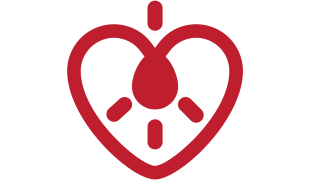- 4262
- 388
- 5
- 7
- 0
- Help Ukraine
About the solution
After spending six years developing this product, Diane came up with a patented lifting belt that can easily be placed on a person who has fallen and needs assistance to get back on their feet.
“Applying the belt, lifting the patient, and then removing the belt can be done in less than 5 minutes”, says on the official website.
The device can accommodate the small and frail patient, all the way up to the morbidly obese patient. It helps to prevent skin tears, bruising, dislocations and other problems.
The idea for this device came when the firefighter and her team found a 600-pound man sitting on his bedroom floor. He wasn’t injured, just needing help to stand up.
The team tried to lift the man by his arms and then tried to lift him by wrapping a sheet around his torso. Nothing worked.
This made Diane go looking for a solution. But she wasn’t able to find a product that would help in these situations. So she took action and built her own device, after creating several prototypes.
Then she was encouraged to market the belt so that other fire departments, ambulance companies, hospitals and others would benefit from the Vetter Belt. So she created her own company to commercialise the invention.
The Vetter Belt was field-tested for five years by firefighters, paramedics, EMTs, and healthcare professionals.
The belt can be bought online from $250.
Adapted from: https://bit.ly/2T06FLI
More info: https://vetterbelt.com/
https://www.youtube.com/watch?v=ZFKt3v69RyA
This solution shall not include mention to the use of drugs, chemicals or biologicals (including food); invasive devices; offensive, commercial or inherently dangerous content. This solution was not medically validated. Proceed with caution! If you have any doubts, please consult with a health professional.
DISCLAIMER: This story was written by someone who is not the author of the solution, therefore please be advised that, although it was written with the utmost respect for the innovation and the innovator, there can be some incorrect statements. If you find any errors please contact the patient Innovation team via info@patient-innovation.com
-
-
542
-
0
-
7389

Slacks with zippers on both sides for patients who have to stand up in public
CAREGIVING
(SELF)-CARE: DRESSING: Dressing independently.
Amyotrophic Lateral Sclerosis
Strategy/Tip
Body-Worn solutions (Clothing, accessories, shoes, sensors...)
Tremors
Muscle cramps or spasms
Stiffness or rigidity (difficulty moving)
Muscle weakness
Trouble with fine motor skills (e.g., writing, buttoning clothes)
Sleep disturbances
Numbness or tingling in the extremities
Restoring mobility
Managing pain
Promoting self-management
Managing Neurological Disorders
Promoting inclusivity and social integration
Preventing (Vaccination, Protection, Falls, Research/Mapping)
Caregiving Support
General and Family Medicine
Medical Genetics
Medical Oncology
Neurology
Orthopedics
Physical Medicine and Rehabilitation
Rheumatology
United States
-
-
-
500
-
0
-
8184

Father creates proximity touch switch for his son
CAREGIVING
Playing
Video gaming
Spinal Cord and Nerve Root Disorders
Body-Worn solutions (Clothing, accessories, shoes, sensors...)
Promoting self-management
Managing Neurological Disorders
To improve Treatment/Therapy
Preventing (Vaccination, Protection, Falls, Research/Mapping)
Caregiving Support
General and Family Medicine
Neurology
Orthopedics
Rheumatology
United States
-
-
-
416
-
0
-
6656

Mother creates crib easy to carry around
CAREGIVING
Traveling
Chronic Back Pain
Body-Worn solutions (Clothing, accessories, shoes, sensors...)
Assistive Daily Life Device (to help ADL)
Managing pain
Promoting self-management
Preserving Organ Function
Preventing (Vaccination, Protection, Falls, Research/Mapping)
Support on Puerperium/Post-childbirth
Caregiving Support
General and Family Medicine
Orthopedics
Pediatrics
Physical Medicine and Rehabilitation
Rheumatology
United Kingdom
-
 en
en